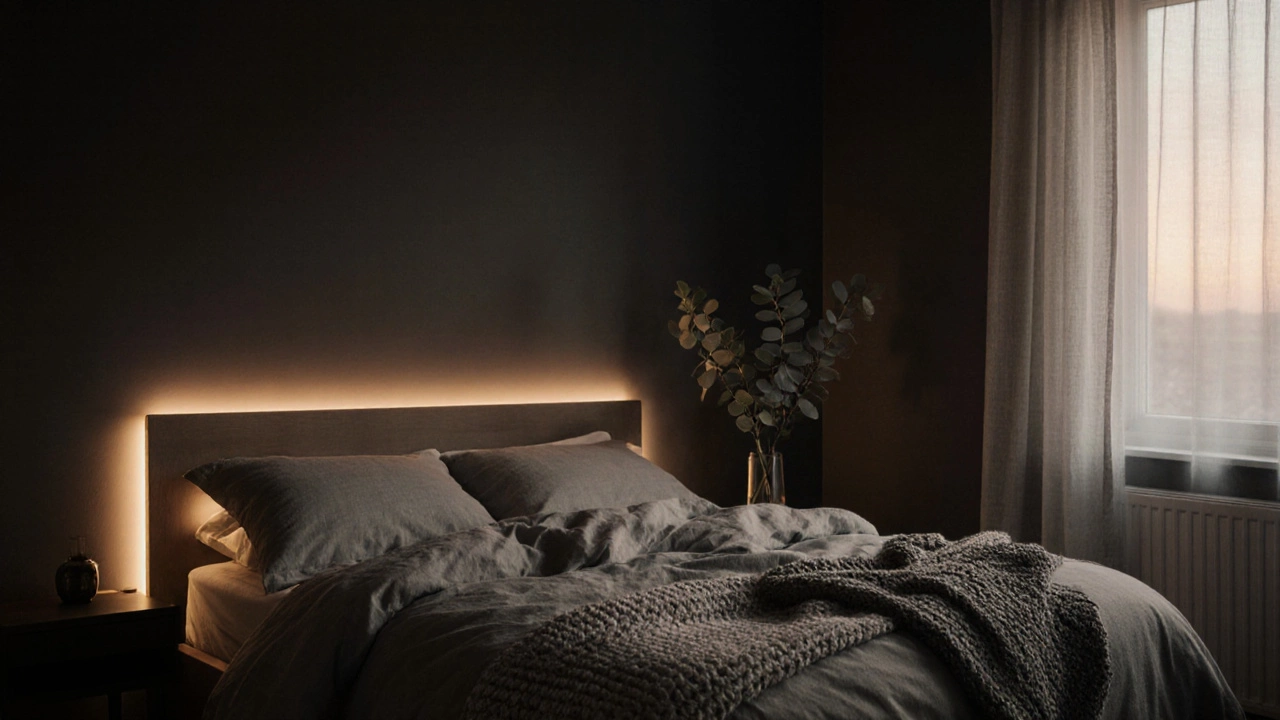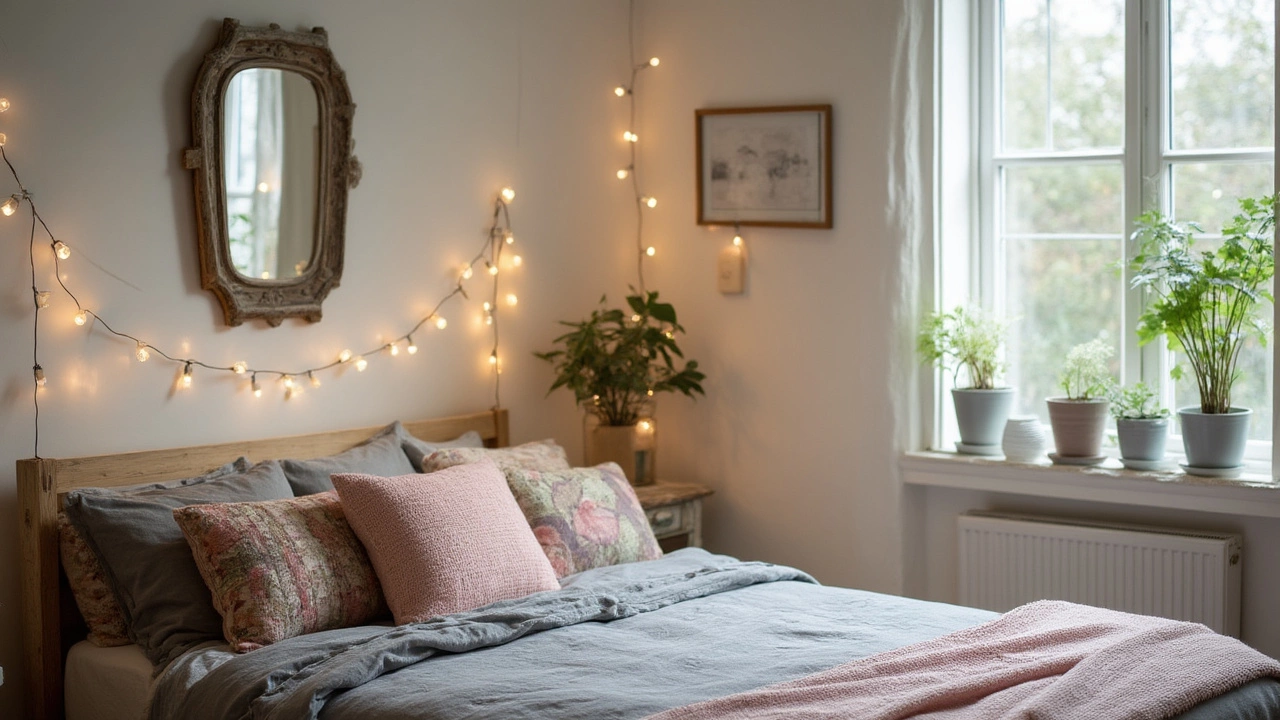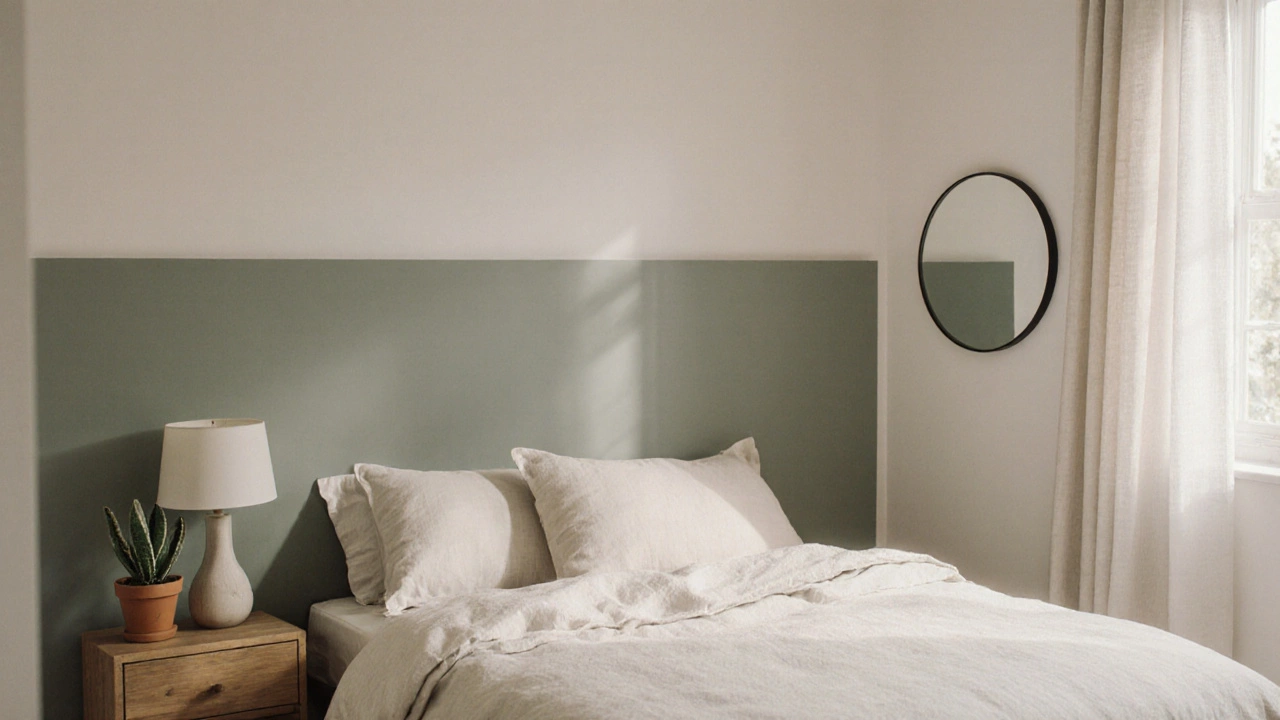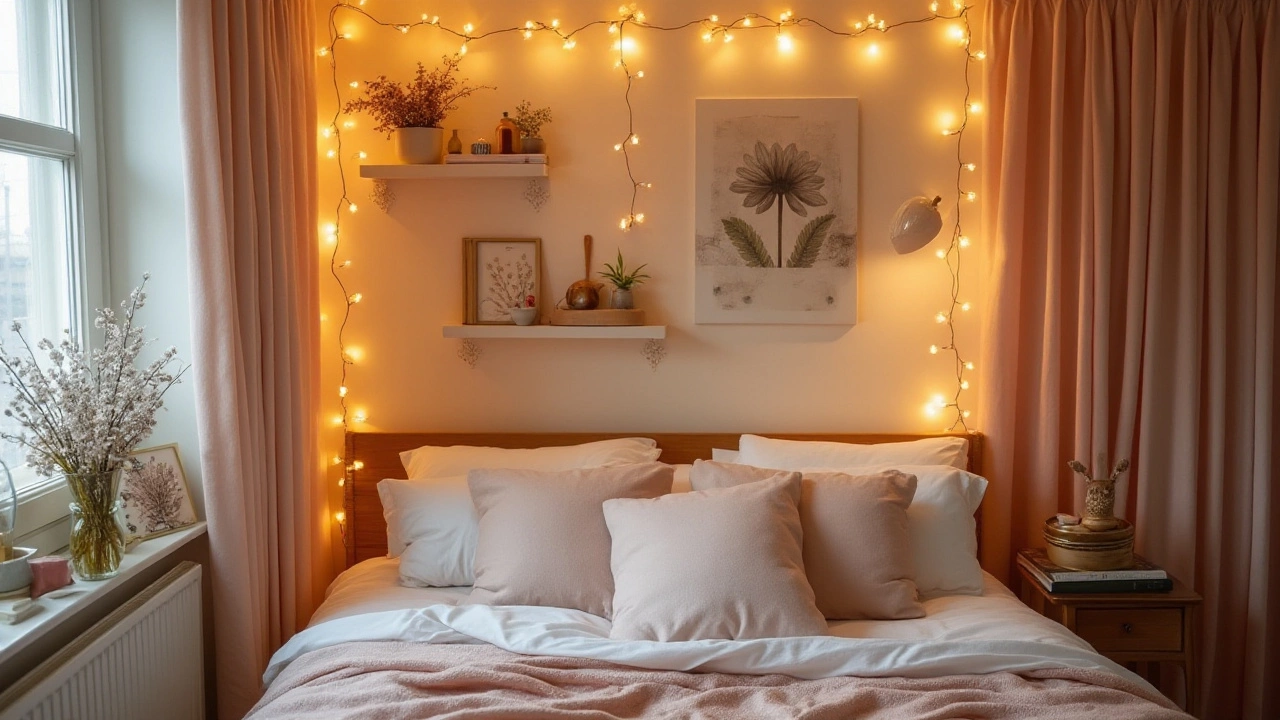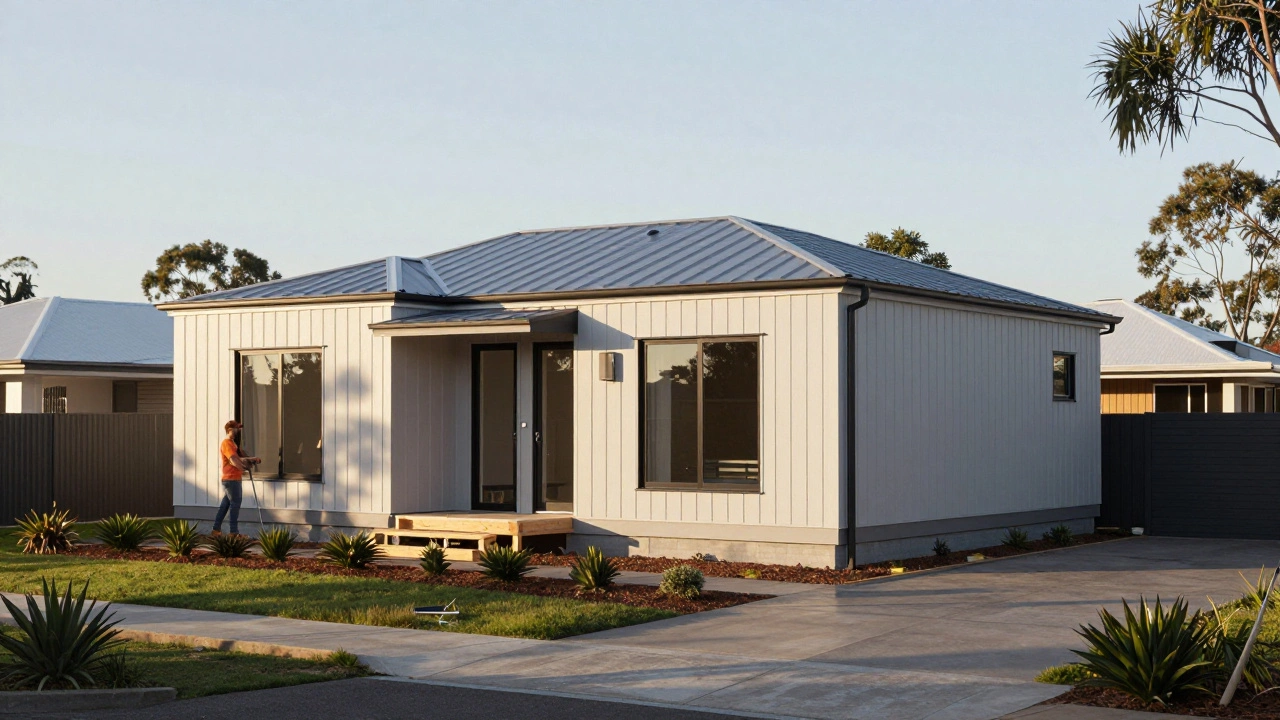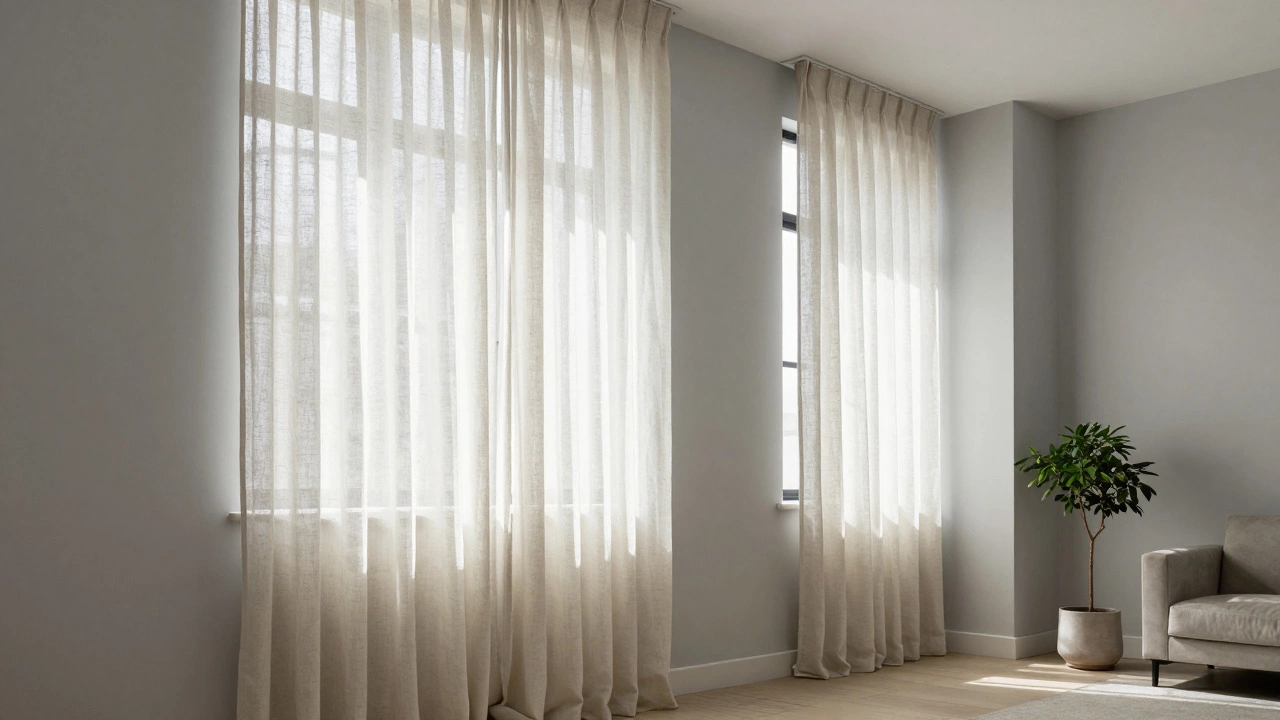Bedroom Sensory Assessment
Rate your bedroom's sensory elements below. Each slider helps you identify where to add subtle spice for a more intimate atmosphere.
Overall Bedroom Feeling
Wall Colors
Textiles & Touch
Lighting Ambience
Subtle Scents
Clutter Level
Personalized Sensory Recommendations
Key Insights
Most people think spicing up the bedroom means buying new sheets or lighting candles. But the real magic happens in the quiet details-the ones you don’t notice until you’re lying there at night, feeling something shift. It’s not about grand gestures. It’s about layers. Texture. Temperature. A scent you didn’t realize you were missing. If your bedroom feels flat, lifeless, or just… ordinary, you’re not broken. You just haven’t tuned into the subtle signals your space is sending-or not sending.
Start with the walls
Paint is the cheapest and most powerful tool you have. But don’t go for bold reds or blackouts unless you’re going for a dramatic theme. For subtle spice, try deep neutrals: a warm charcoal like Benjamin Moore’s Graphite, or a muted taupe like Sherwin-Williams’ Tricorn Black with a hint of brown. These colors don’t shout. They breathe. They make the room feel like a cocoon-intimate, safe, and quietly luxurious. Hang one or two framed prints with soft, organic lines-think abstract watercolor or a single line drawing of a leaf. No posters. No quotes. Just quiet art that invites you to lean in.
Change the lighting, not the bulbs
Overhead lights are the enemy of romance. They flatten everything. Instead, layer your light. A dimmable bedside lamp with a fabric shade casts a soft pool of warmth over your skin. Add a small LED strip behind the headboard-it’s invisible during the day, but at night, it glows like moonlight on a wall. If you’ve got a window, hang linen curtains in a natural tone. Let them fall just past the sill. When the sun sets, they turn the room into a lantern. No harsh LEDs. No fluorescent halos. Just gentle, flickering warmth that makes even a Tuesday night feel like a retreat.
Texture is your secret weapon
Touch matters more than you think. Your skin remembers what it feels against fabric. Swap out cotton sheets for a high-thread-count linen blend. It’s cool in summer, warm in winter, and gets softer with every wash. Drape a chunky knit throw over the foot of the bed-not neatly folded, but casually tossed. Add a faux fur rug beside the bed. Not the kind that looks like a cheap Halloween prop. Find one with a dense, low pile in ivory or charcoal. Step onto it barefoot in the morning. That’s the moment your body starts to relax. And when you slide under the covers at night, your fingers brush against the texture of the blanket, the rug, the sheets-and you feel it. Not because you’re trying to. Just because it’s there.
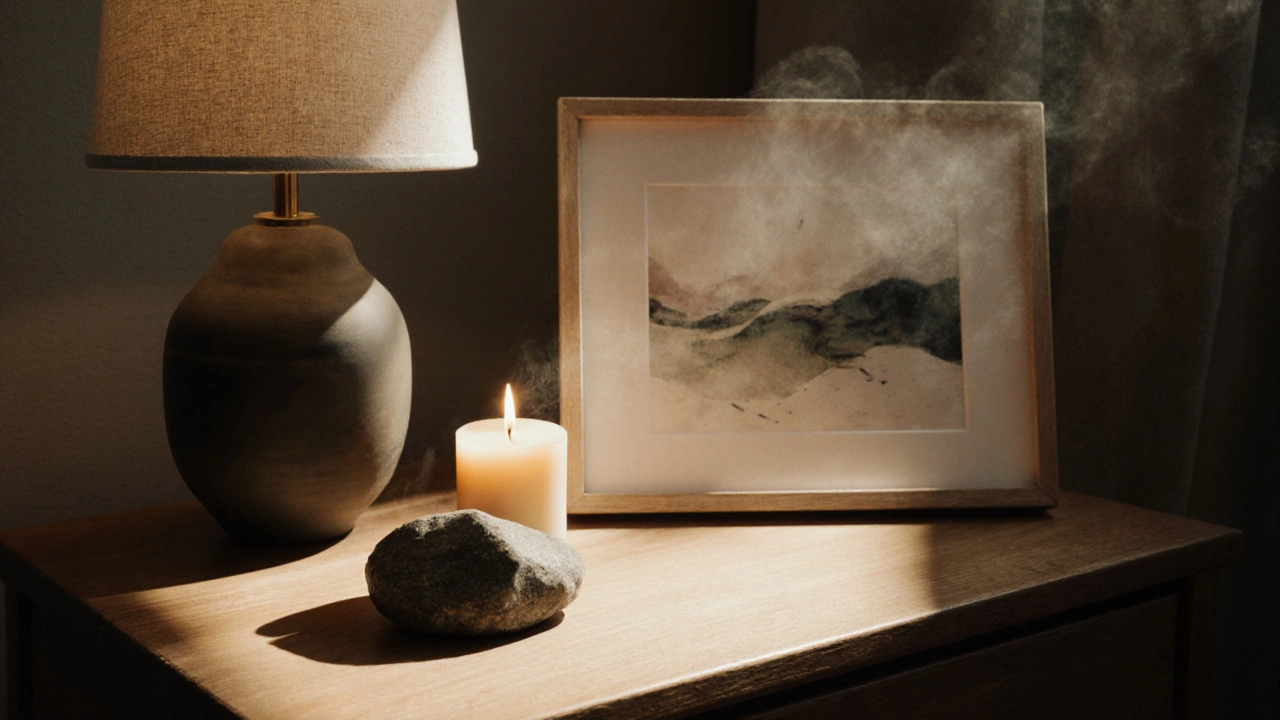
Scent is the silent seducer
Scents bypass logic and go straight to memory. But don’t use plug-ins or overpowering candles. They smell like a spa that’s trying too hard. Instead, try a single essential oil diffuser with a blend of sandalwood, vanilla, and a drop of bergamot. Or, if you’re not into devices, place a small ceramic dish with a few drops of fragrance oil on your nightstand. Light a beeswax candle once a week-just for ten minutes before bed. The scent lingers, but it’s subtle. It doesn’t announce itself. It just makes you feel like you’re wrapped in something warm and familiar. The kind of smell you can’t name but always miss when it’s gone.
Declutter with intention
A cluttered bedroom feels like a to-do list you can’t escape. But “spicing up” isn’t about adding more stuff. It’s about removing the noise. Clear off your nightstand except for one small object: a smooth stone, a single candle, or a tiny vase with one stem. Keep your clothes off the floor. Not because it’s tidy-it’s because visual calm is the foundation of sensual calm. If you have a dresser, leave the top bare. No knickknacks. No charging cables. Just space. That empty surface becomes a ritual. You place your phone there. You set down your glasses. You pause. And in that pause, you notice the quiet.
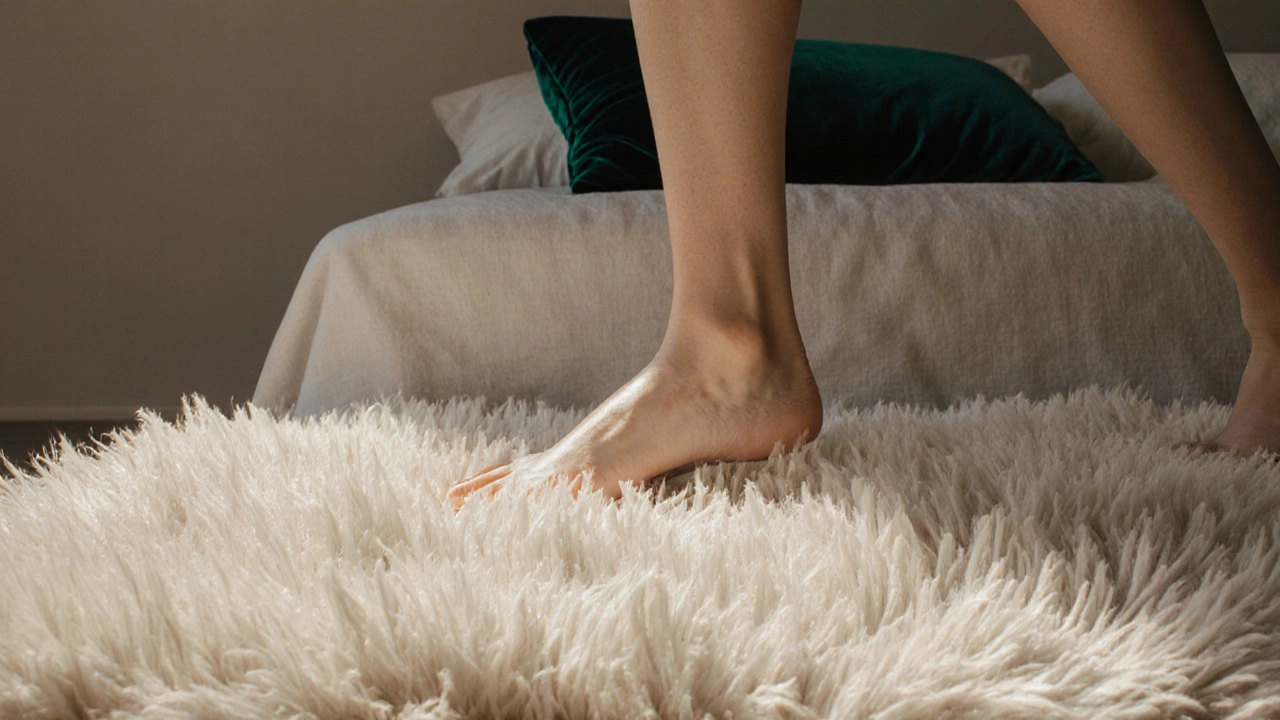
Introduce one unexpected detail
This is where the spice really kicks in. Pick one thing that feels slightly out of place-but in the best way. A velvet pillow in a deep emerald on a neutral bed. A small brass tray holding your favorite book and a single key. A framed photo of a place you’ve never been but dream of. It doesn’t have to be expensive. It just has to spark curiosity. Something that makes you think, “Huh. I didn’t expect that here.” That’s the moment your brain stops scrolling and starts feeling. That’s the moment your bedroom stops being a room and becomes a feeling.
Let the outside in
Even if you live in a city apartment, bring nature inside. Not potted plants-those require care. Instead, place a single branch in a tall glass vase. A eucalyptus sprig. A dried palm frond. Something that moves slightly when the window opens. The scent, the texture, the way it catches the light-it’s alive without demanding attention. In Melbourne, where seasons shift quietly, this connection to the outside world becomes a quiet rhythm. Winter breezes carry the smell of rain. Summer nights bring the hum of cicadas. Let your bedroom hold that memory.
It’s not about sex. It’s about presence.
The goal isn’t to turn your bedroom into a love nest. It’s to turn it into a sanctuary where you feel fully, deeply, unapologetically yourself. Where you can lie still and just be. Where the air feels heavier, softer, richer. Where you don’t need to do anything to feel good-you just do. That’s the subtle spice. It’s not loud. It’s not flashy. It’s the quiet hum of a space that understands you. And when you finally notice it, you’ll wonder how you ever lived without it.
Can I spice up my bedroom without spending money?
Absolutely. Rearrange your furniture to create a cozier layout. Swap pillow covers with ones you already own. Use a white sheet as a makeshift curtain to soften harsh light. Place a few smooth stones or fallen leaves from your balcony on your nightstand. The most powerful upgrades cost nothing but attention.
What colors make a bedroom feel more intimate?
Warm, low-saturation tones like deep taupe, charcoal, soft rust, or muted olive create a sense of enclosure and calm. Avoid bright whites or cool grays-they reflect too much light and feel clinical. The best intimate colors are ones that absorb light slightly, making the room feel like a warm hug.
Should I add mirrors to make the room feel bigger or sexier?
Mirrors can reflect light and energy, but in a bedroom, they often break the sense of privacy. If you use one, place it so it reflects a candle or a plant-not your bed. A small, framed mirror on a dresser can work if it’s not directly opposite the bed. The goal is warmth, not spectacle.
How do I choose the right bedding for comfort and mood?
Look for natural fibers: linen, cotton sateen, or TENCEL™. Aim for 200-400 thread count-anything higher doesn’t mean better. Linen is cool and breathable, perfect for Melbourne’s variable climate. Sateen has a subtle sheen that catches light softly. Avoid polyester blends-they trap heat and feel synthetic. Your sheets should feel like a second skin, not a plastic wrap.
Is it okay to have electronics in the bedroom?
Keep them out of sight. Charge your phone in another room, or at least tuck it under the bed or inside a drawer. If you must keep it nearby, use a small wooden tray to contain it. Blue light disrupts sleep, and the presence of devices signals “work mode.” Your bedroom should feel like a signal to switch off-not stay on.
If you’ve tried everything and still feel like something’s missing, ask yourself: when was the last time I just lay here and did nothing? Not scrolling. Not thinking. Just breathing. That’s the real upgrade. The rest? It’s just the background music.

